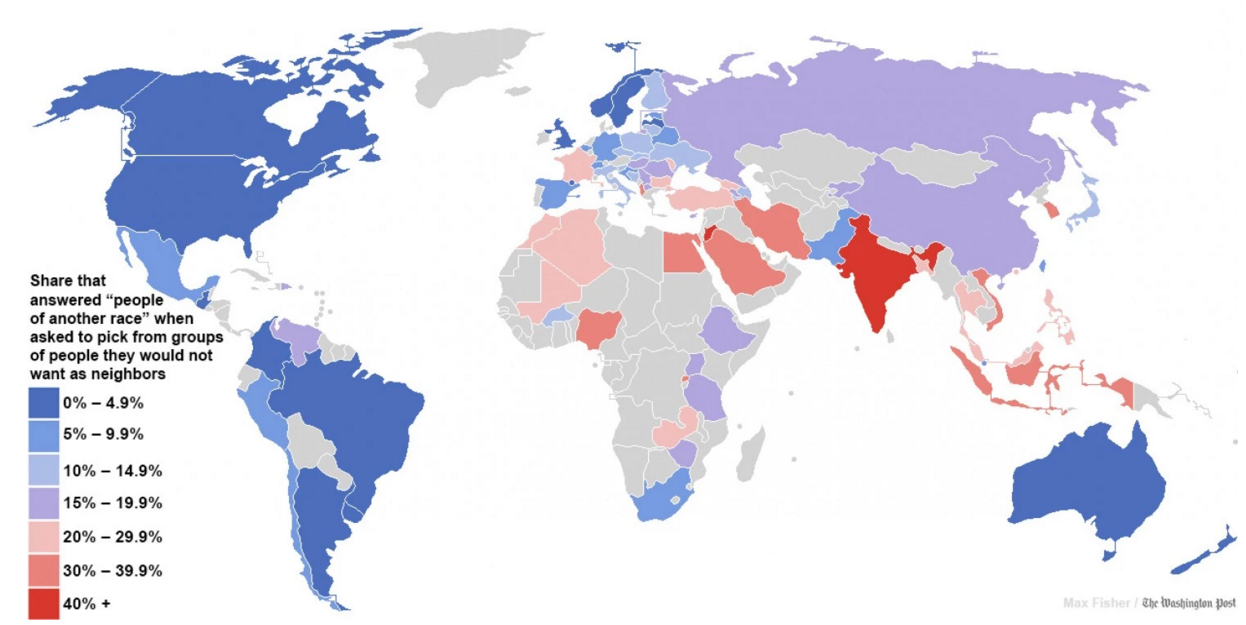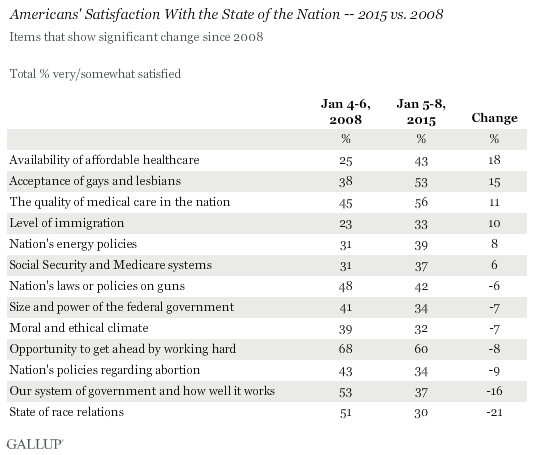Here Are the Most and Least Racially Tolerant Countries

By:
While race has become a central issue in the 2016 presidential election, matters of racial intolerance are by no means exclusively American. In an increasingly diverse and globalized world, relationships between different races appear to vary from country to country, and international surveys show us that some countries are less accepting of diversity than others.
The World Value Survey collects information about global attitudes by asking participants in more than 80 countries to respond to a range of questions, including one that has served as an indicator of attitudes about race. When researchers asked what kind of person these participants wouldn't want as neighbors, those who said "people of a different race" were judged as racially intolerant.
This map shows the most and least racially tolerant countries.
 The Washington Post - washingtonpost.com
The Washington Post - washingtonpost.com
The Washington Post used data from the World Value Survey to create the map above. The bluer countries are considered more racially tolerant and the redder countries, of course, are more racially intolerant. Countries in the Middle East and in certain countries in Asia were found to be the most racist, whereas Anglo and Latin countries appeared to be the most accepting.
The reason for this international divide in attitudes about race isn't totally clear, but researchers speculate that differences in opinion on immigration and national identity contribute to feelings of racial intolerance in many countries. For example, racial tolerance levels are fairly inconsistent across Europe, where highly educated and presumably progressive countries such as France ranked among the least racially tolerant in the continent — almost 23 percent of French people said that they wouldn't want a neighbor of another race.
In the Middle East, immigration is a major concern in a number of countries. Fear of outsiders from poorer countries coming in and taking jobs apparently contributes to racist attitudes, especially in Egypt and Saudi Arabia, the Post reported. And in Asian countries such as Indonesia and the Philippines, complex racial histories inform hostile attitudes about different races.
There are outliers, of course. Despite regional trends, Pakistan — who has low economic and human development indices — is surprisingly accepting, with 93.5 percent of Pakistanis feeling good about having a neighbor of a different race. South Korea, whose population is well-educated and wealthy — generally indicators of more tolerance — is one of the most prejudiced countries.
It's also distinctly possible that people lied on the survey, so coming to any definitive conclusion about global racial intolerance trends is admittedly difficult. The fact that the U.S. ranks among the most racially tolerant certainly raises questions, as a recent Gallup Poll found that satisfaction with race relations in America have dropped dramatically, down 21 points — from 51 to 30 percent — since 2008.
 Gallup - gallup.com
Gallup - gallup.com
"Both blacks and whites view race relations negatively — with 40 percent of both groups saying relations were getting worse, almost double the amount of all respondents who said that they were improving," the International Business Times reported. "The level of discontent about race relations among blacks has now soared to 68 percent, the highest level during the Obama presidency, and close to the numbers recorded in the aftermath of the riots that followed the acquittal of Los Angeles police officers charged in the beating of Rodney King in 1992."
